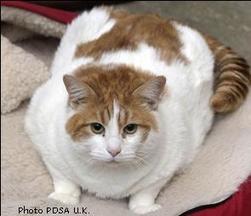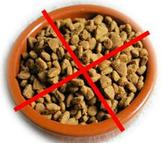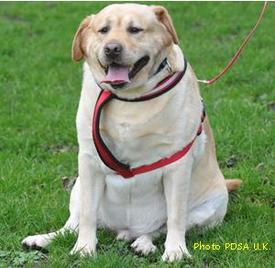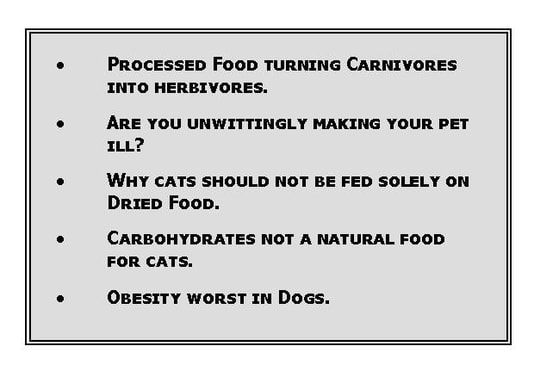Domestic animals living in close proximity to man are prone to fall victim to human diseases observed Surgeon Captain T.L Cleave FRCP.

PROCESSED FOOD TURNING CARNIVORES INTO HERBIVORES
Cleave was acknowledged as one of the greatest physicians of the 20th century, more than 50 years ago. In his book “The Saccharine Disease“, he described how the dog, which in nature is almost a pure carnivore, has largely been turned into an herbivore. “In Nature, as in an English countryside, it would spend its time catching rabbits, rats and other similar mammals and would never turn aside to eat the ears of the wheat ripening in the field. The nearest it would get to that would be occasionally to make itself sick by eating a few blades of grass.” Unfortunately Cleave’s warning of the dire consequences of the Saccharine Disease in humans, namely the overconsumption of refined carbohydrates, has to a great extent been ignored, and now man’s best friend is following him down the same path to disease and unnecessary suffering, all in the name of cheapness and convenience. ARE YOU UNWITTINGLY MAKING YOUR PET ILL? A survey conducted by the UK’s People’s Dispensary for Sick Animals (PDSA) a few years ago found that in hospitals run by the organisation, of 245,000 pets examined, one in 22 dogs and one in 43 cats had heart disease, while one in 169 pets suffered from diabetes. A senior veterinary surgeon at the PDSA said, “Too many people are killing the pets they love with kindness. They simply do not realise that by feeding their pets solely on unnatural processed food they are actually condemning them to becoming victims of our human diseases.” Even caged animals in a zoo never become obese provided they are given, according to species, the natural raw food that they would eat in the wild, thus proving that correct feeding is even more important than exercise. WHY CATS SHOULD NOT BE FED SOLELY DRIED FOOD Dry food is dangerous for cats because in nature they take the water they need from their food. The cat originated as a desert predator, so is not a natural water drinker. When it is fed dry food it can quickly become dehydrated and even though water is provided it may not drink. Dehydration causes many problems, from skin complaints to more serious problems affecting the bladder and kidneys such as infections and crystals to which male cats are particularly prone. The urine becomes too concentrated because the body is called upon to provide water into the digestive tract in order to re-hydrate the dry food. It is much better for the cat to eat its food with the water in it. A carnivore such as a cat must eat meat in order to maintain the correct level of acidity in the urinary tract and for the proper processing and elimination of toxins and excess body fluids. It is said that most cats over age 15 have kidney disease. Put simply, cats should not eat solely dry food and yet in some animal rescue homes this is all they ever get because, of course, it is convenient. Dry pellets should never be left out for a cat to "graze" on during the day. 
CARBOHYDRATES NOT A NATURAL FOOD FOR CATS
Dry food generally contains cereals and even if it is cereal-free it contains starches and carbohydrates to hold the food together. These carbohydrates break down into sugars which cause plaque on the teeth, so the so-called dental benefits of eating dry food are not true; it would be like eating a biscuit to clean your teeth. Statistics indicate that more than eight out of ten cats over the age of 4 years suffer from periodontal disease, a condition in which bacteria attack soft gum tissue, and many cats now have teeth so badly infected that they have to be extracted. These conditions are unlikely to occur in a cat fed on the carnivorous diet for which it was designed. Carbohydrates are not very well digested by cats; their natural diet contains protein, fat and vitamins and not much else. They can cause diarrhoea, stomach upset and obesity as they are stored as fat and not easily converted to usable energy. Increased body fat is associated with insulin resistance which can lead to the development of diabetes mellitus. |

OBESITY WORST IN DOGS
A new report in the Daily Telegraph (03.07.17) revealed that almost half the cats and dogs in the UK are now regarded by vets as obese. The study suggests that the numbers of overweight animals has soared in the last five years, and claims that the cost of treating pets for obesity-related conditions is now around £215 million a year. The problem is worst in dogs, with vets reporting that 45 per cent of those they treat are obese or overweight. The situation is little better in cats (40 per cent) One in three owners admitted feeding their animals “human” food, while the numbers giving them leftovers had risen by 28 per cent in the last five years. Vets believe this is the leading cause of pet weight gain, responsible for eight out of ten cases in dogs. The report discovered salt, sugar, oils and fats in a number of leading brands and found chicken dinners containing just four per cent chicken. Some pet nutritionists and behaviourists argue that, just as with children’s junk food, the ever growing pet food industry’s convenience cat and dog food in the form of dried biscuit and pellets is at least partly responsible for an epidemic of animal obesity, as well as some behavioural issues. The new PFMA report, “Pet Obesity: Five Years On”, follows a similar study by the organisation in 2009. It found that three quarters of vets (77 per cent) believed the problem was getting worse and three in four vets in the UK are running obesity clinics. It claims that giving one biscuit to a dog is equivalent to a person having two, and that one chunk of cheese for a cat is the equivalent of nine for a human. Dogs are scavengers. According to a study by biologists Ray and Lorna Coppinger, the natural diet of dogs included, "Bones, pieces of carcass, rotten greens and fruit, fish guts, animal guts and heads, some discarded human food and wastes." Improving the balance of a dog's diet by reducing the cereal content could avoid the need for dangerous non-steroidal and steroid drugs so commonly prescribed for dogs. Toxic drugs may make animals more comfortable, but will shorten their lives. MISLEADING RECOMMENDATIONS
The "recommended" diet of dry foods high in carbohydrate, low in protein, fat, and with almost no water, which is the diet of many cats and dogs, is the complete opposite to a natural diet. Meat and fat are expensive whilst cereals are cheap in comparison. Dogs and cats do not need carbohydrates, and most veterinary textbooks agree with this. Why then do so many veterinarians continue to recommend dry food? Pet health and nutrition experts Steve Brown and Beth Taylor suggest adding ‘good quality canned food to a dog’s diet which has no grains and generally contains more protein and fat than dry pet foods.’ They recommend adding up to 15 percent fresh meat, raw or cooked: This increases the protein and reduces the carbohydrate content of the pet's food, but will not unbalance the levels of any essential nutrient in the animal's diet. They advise pet owners to avoid senior, light and diet foods as these varieties usually have fewer calories per cup because manufacturers have increased the fibre and carbohydrates and reduced protein and fat, compared to adult maintenance diets. This is the opposite to what they really need, and has no scientific foundation. Older and overweight pets need meat, not cereals. A word of caution, for diabetic animals or any with other medical conditions, making a switch to a more protein-based diet should be under the close supervision of a vet. References: https://www.facts-are-facts.com/news/do-dogs-and-cats-need-grains#.WX34WlFLfIV http://www.telegraph.co.uk/lifestyle/pets/10747181/Nearly-half-of-dogs-are-now-obese-say-vets.html |

